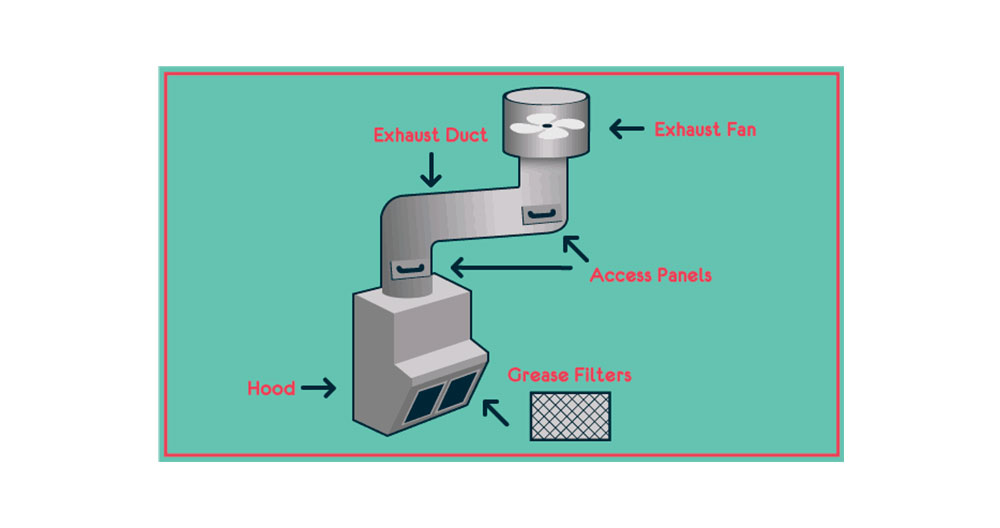Advertisement
Every home must have certain basic characteristics for it to be habitable, among them is ventilation. Adequate ventilation allows the expulsion of contaminated air. In the case of kitchens, ventilation cannot be ignored, and there is even a need for a more complex extraction system that allows you to control what air you want to eliminate. That is the reason why a kitchen exhaust fan is installed, but many people do not know all the problems that these cause if they do not meet certain quality standards.
The kitchen fans are usually installed above stoves in places where there are electrical appliances that, when used, generate vapors full of grease and unpleasant odors. In this way, you can activate it to keep your kitchen clean and free of moisture that could damage its structure.
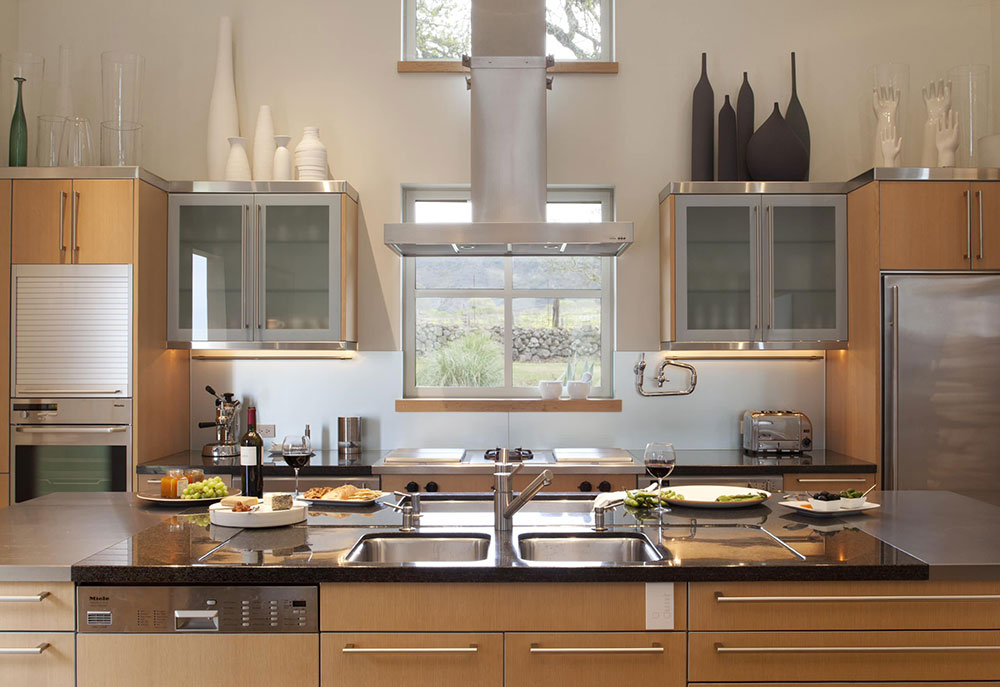 Image source: Remick Associates Architects + Master Builders
Image source: Remick Associates Architects + Master Builders
The problem is that some people think that kitchen exhaust fans are just decoration, and they do not consider many things when installing them, which makes their performance below optimal. They can even be a danger to you in case of fire.
If you don’t want a bad installation to become a mess in your kitchen, read on to learn how to avoid the most common problems with these gadgets.
The way a kitchen fan works
A kitchen exhaust fan works similarly as any other extractor: this one has a motorized fan inside the duct that sucks the air that is under it, accumulating it inside it.
Some kitchen extractors also include built-in lights or different extraction speeds for more efficient work.
These are usually activated manually by a switch or button, but some more advanced models use a thermostat to automatically turn on when they exceed a certain temperature.
Common drawbacks of exhaust fan for kitchen
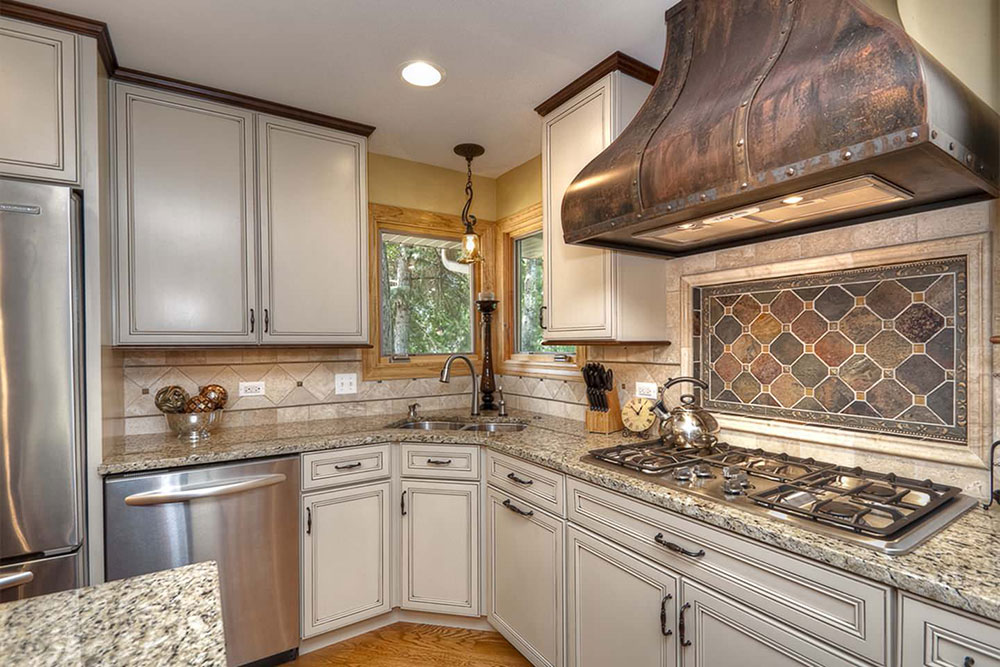 Image source: RAHokanson Photography
Image source: RAHokanson Photography
There are two common reasons why an exhaust fan loses its utility: it has been poorly installed and is not absorbing air, or owners are not using it when cooking. The first of the causes is also subdivided into other minor problems that lead to poor performance.
The kitchen exhaust fan seems unnecessary or annoying
 Image source: Rockefeller Kempel Architects
Image source: Rockefeller Kempel Architects
A survey of multiple homeowners revealed that the vast majority do not use the exhaust fan for multiple reasons. The most common reason is that they see it as an unnecessary contraption, although another part of the surveyed admits that the sound that this fan generates is very loud and they prefer not to use it.
Approximately 20% of people indicated that they do not currently have an extractor fan in their kitchen, and even 10% admitted never having used one. Only 13% said they used the extractor constantly.
Proper maintenance begins with good access
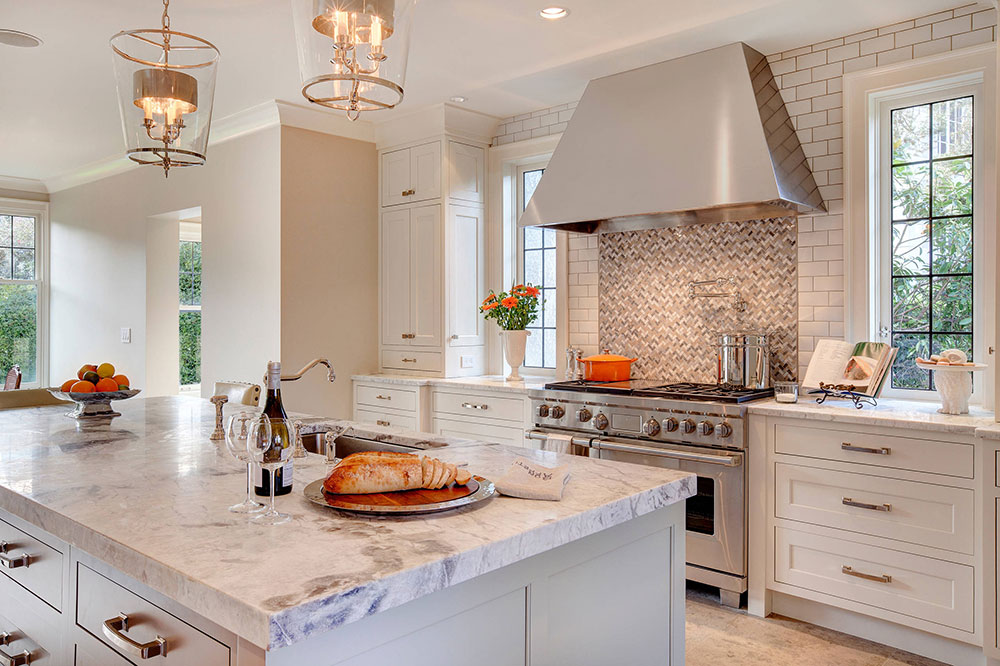 Image source: collaborative interiors
Image source: collaborative interiors
Your extractor may be failing due to a lack of maintenance. Extraction ducts must be cleaned frequently so that they are not clogged with grease and moisture. That is why the installation of doors that allow access to the internal part of the ducts is recommended.
These gates must be large, located at each change of direction of the duct, and a door should be placed every 12 feet for horizontal ducts or every 3 feet from a fan.
Like the rest of the kitchen, it is recommended that the materials of these doors be resistant to grease.
Even when not constantly used, the exhaust ducts are exposed to agents that can harm their performance, in some cases, they could even cause explosions if it is grease or oil.
Bad location or sealing
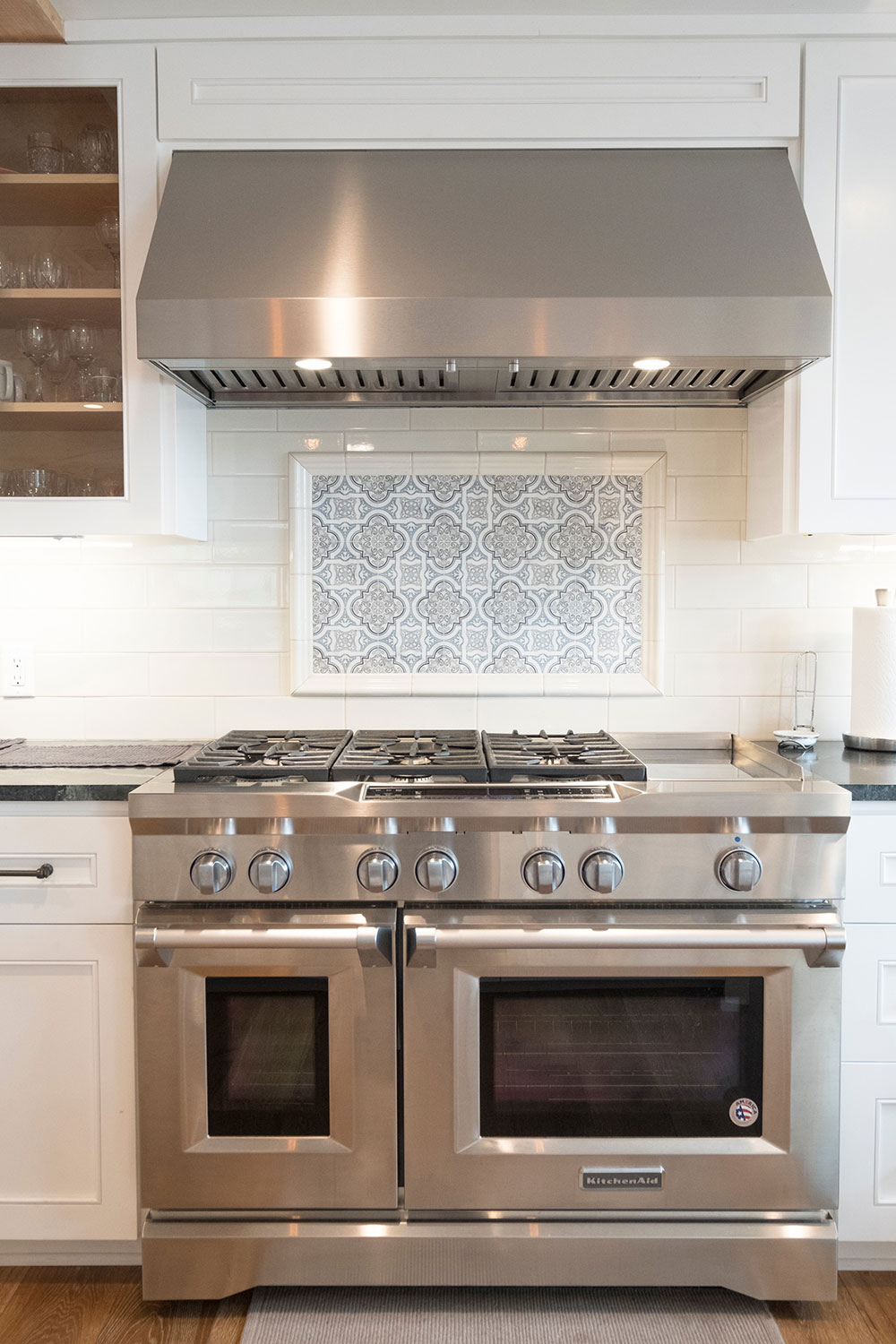 Image source: GAINES GENERAL CONTRACTING
Image source: GAINES GENERAL CONTRACTING
The extractor’s location is essential so that it can fulfill its function properly. If it is not near the steam-generating appliances, it will not be able to efficiently absorb air.
Also, if the ducts are not well sealed, the residual air could leak and compromise the integrity of other areas inside your home.
Not all kitchen exhaust fans expel the air to the outside, but they try to filter the impurities to later recirculate it inside the home. In these cases, the installation of the pipelines is not so relevant.
Extractors are noisy
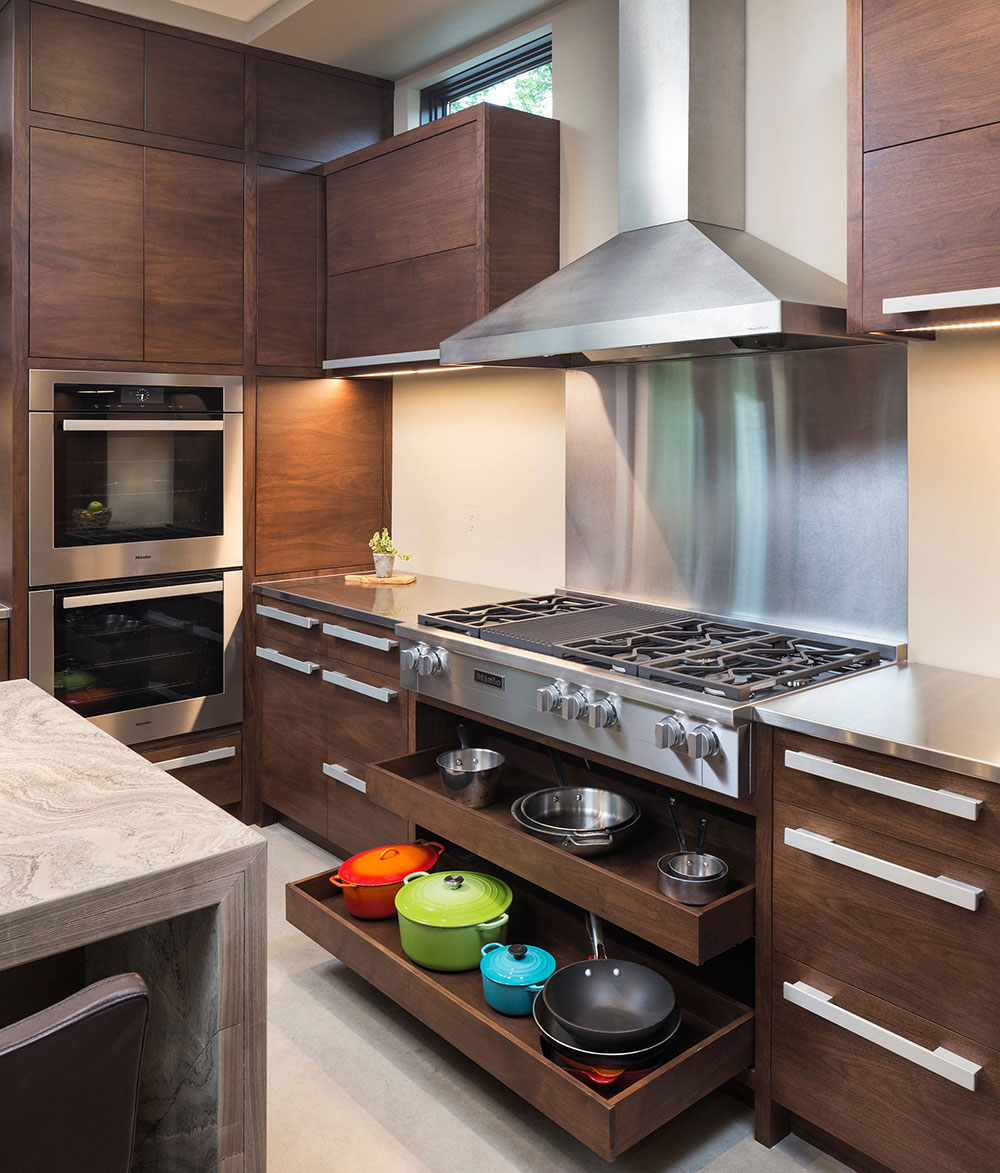 Image source: John Kraemer & Sons
Image source: John Kraemer & Sons
There is no way to prevent the extractor from making noise, no matter how hard you try, the fan will be somewhat noisy when operating. However, the noise should not be so loud as to avoid using it entirely.
If the installation was not the best, leaving loose or misplaced parts, the exhaust fan will be even louder. A professional review is recommended in these situations. Remember that not using the kitchen ventilation fan just because of the noise is not an acceptable excuse to let moisture and odors build up inside your home.
The heat source is very close to the extractor
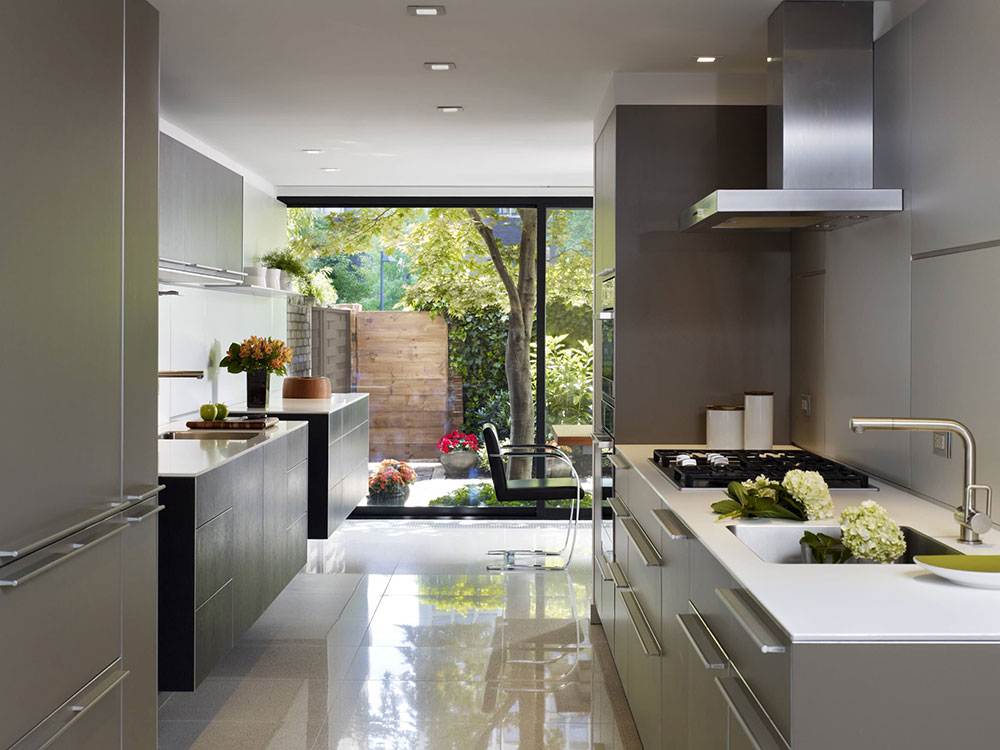 Image source: k YODER design, LLC
Image source: k YODER design, LLC
For your safety, the kitchen exhaust fan should have a safe separation distance from any heat source. The kitchen is a fire-prone area, and having appliances close to each other will eventually cause flames to spread much faster.
In the case of gas stoves, there must be a minimum separation of 45 centimeters (approximately 18 inches) to prevent the fire from reaching the extractor. The charcoal grills should be separated 122 centimeters from the extractor.
The stove gas pipes must be installed on the wall, preferably towards the ground, to keep them away from the kitchen ceiling exhaust fan.
Not only are household appliances dangerous near the extractor, but also all flammable materials must be kept away from them. Oils, fuels, cleaning products, and even some foods are prone to burning and causing large fires.
Although the ducts are tried to be placed as far away from dangerous areas as possible, usually there will be some tube on the outside that must be coated to avoid accidents. These are enclosed in special spaces made of fire-resistant materials, which should not be used as shelves.
Recommendations to improve the operation of the extractor
Ventilation will always be necessary for the kitchen even if you do not generate grease when cooking. This is the only way to keep odors out of it to ensure a more pleasant environment in which to work.
Now that you know the most common faults of kitchen exhaust fans, you can try to solve them to achieve a cleaner and more hygienic kitchen. These are some of the recommendations that you can apply to.
Prevent grease from reaching the extractor
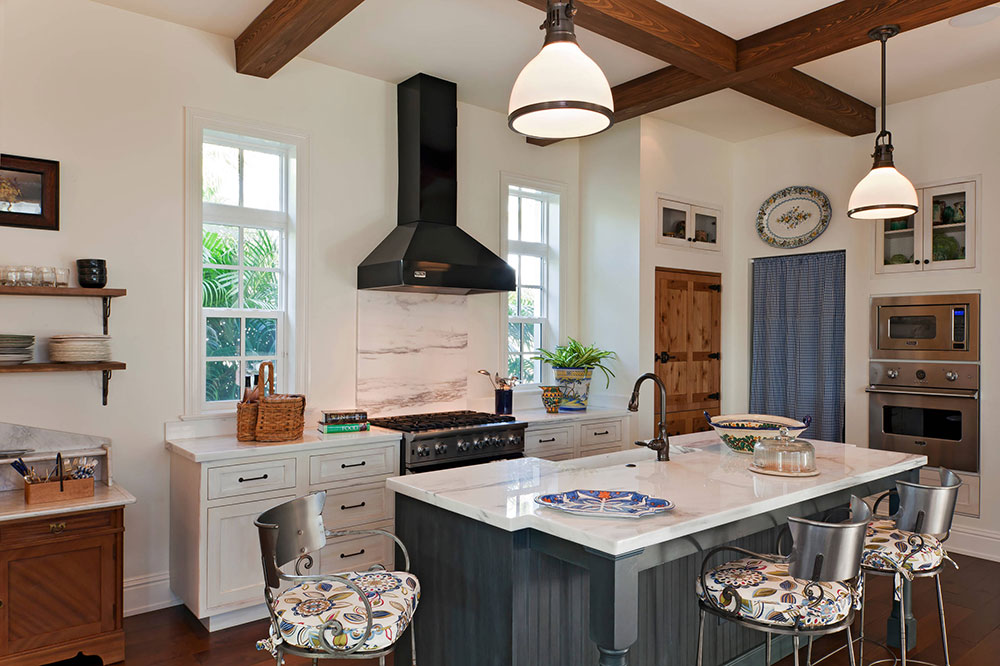 Image source: BCB Homes, Inc.
Image source: BCB Homes, Inc.
Installing a barrier made of carbon is an economical way to reduce the amount of grease particles that the kitchen exhaust fan absorbs. This is a common accessory for kitchens, which has the additional advantage of reducing bad odors.
The best thing about carbon-based coating is that you can wash it multiple times using soap and water, which extends its life.
Minimum requirements for ventilation
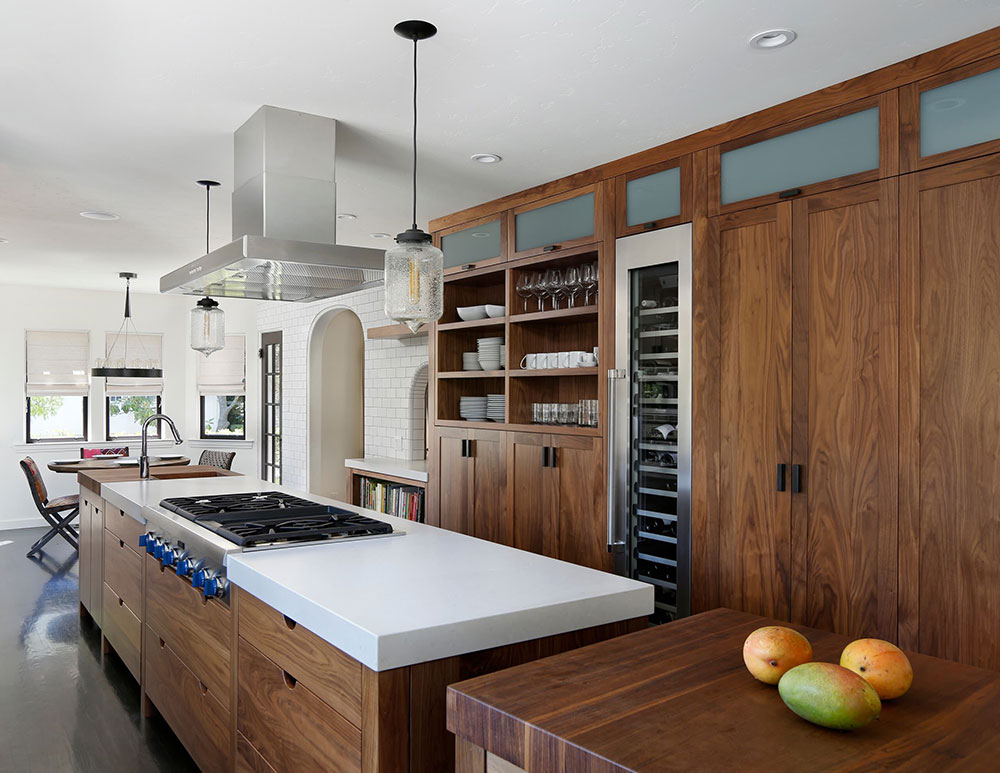 Image source: Bernard Andre Photography
Image source: Bernard Andre Photography
In the case of a wall-mounted fan, it must expel the air to the outside of the house, not to another room. If this is not possible, and you need to install ducts, they must have certain characteristics.
Ducts generally have a dimension equal to or greater than that of the kitchen vent fan. They must be made of metal to prevent deterioration with use. Also, the walls must be smooth to avoid the accumulation of dirt.
Avoid curves if possible, especially if they are sharp. Each section must be properly insulated using putty or silicone to prevent leaks.
Perform a visual inspection
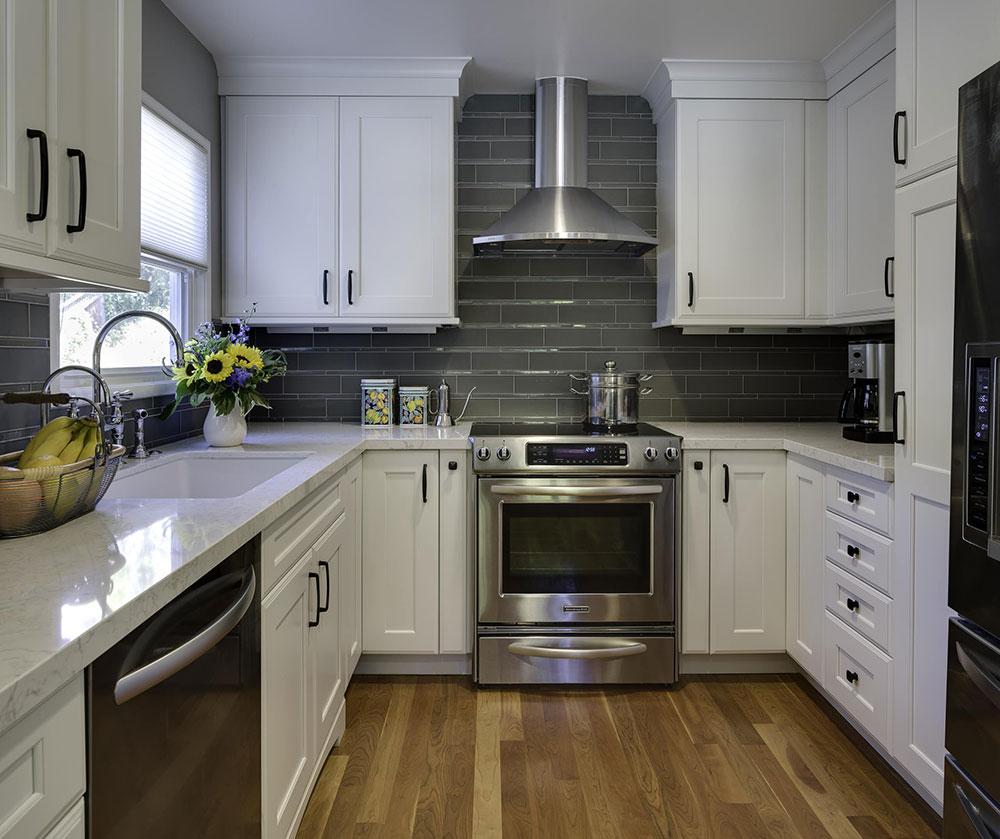 Image source: Barbra Bright Design
Image source: Barbra Bright Design
The first step for determining a problem in a kitchen exhaust fan is to discard those that can be easily seen.
If you are using a kitchen ventilation fan, make sure that the fan is expelling the air and not recirculating it inside your home.
Check if all the joints are properly sealed. The union of the fan and the ducts is done with mechanical fasteners, while each section of the ducts is sealed with putty or spray foam; the second option is more effective for rigid installations.
Keep windows open
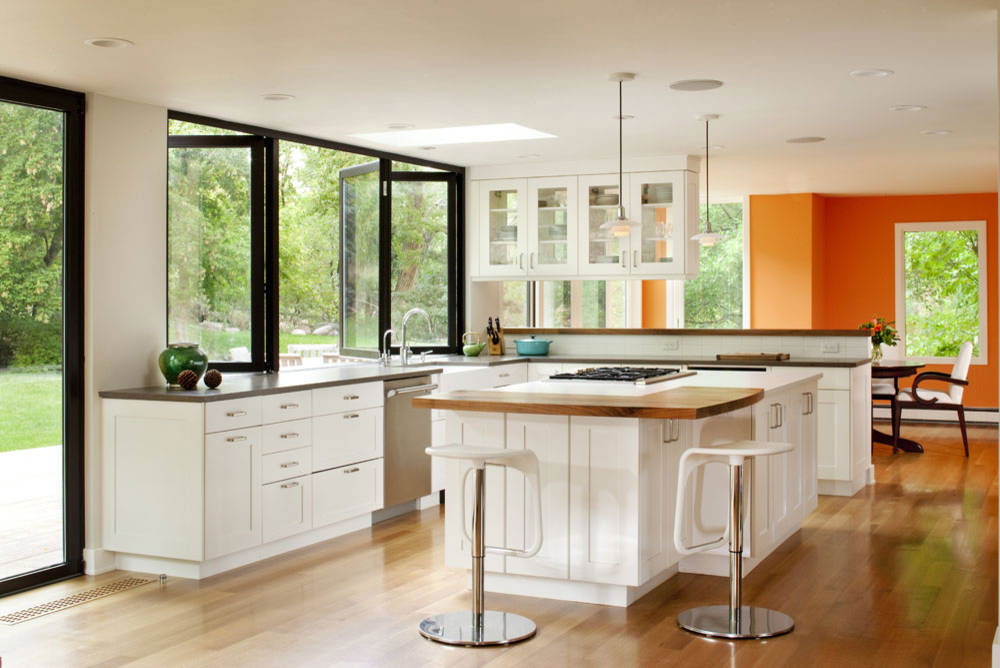 Image source: Melton Design Build
Image source: Melton Design Build
The most basic thing you can do to help your ventilation system is to simply open your home’s windows. If the weather permits, it is recommended that you open doors and windows when cooking so that vapors and odors do not accumulate.
Unlike an exhaust fan, opening windows and doors allows fresh air to enter, which will keep your home’s temperature always pleasant.
If you enjoyed reading this article about the kitchen exhaust fan, you should read these as well:
- How to refinish kitchen cabinets to look beautiful and new
- Basement kitchen ideas for creating an amazing kitchen
- L shaped kitchen island ideas to try in your kitchen

